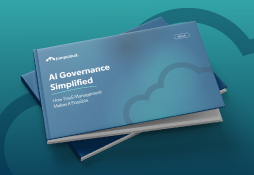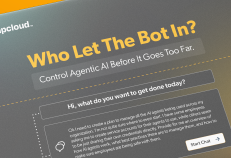AI has quickly moved from experimental projects to a core part of IT strategy. Most organizations are either already using AI or actively preparing to roll it out. That shift is reshaping how IT teams manage infrastructure, secure identities, and protect data.
But rapid adoption brings new risks. AI systems don’t operate in isolation — they connect to critical infrastructure, process sensitive data, and sometimes make decisions on their own. Without oversight, they can create security gaps and compliance issues.
The decisions you make now will shape whether AI becomes a competitive advantage or a liability for your organization. The good news? With clear governance policies in place, you can lead AI adoption confidently, securely, and at scale.
The Importance of Governing AI
Most IT leaders are worried about AI adoption getting out of control. In fact, 94% say they’re concerned about unchecked integrations and compliance gaps that could leave their organizations exposed.
Good governance is how you get ahead of those risks. Clear policies spell out where AI can be used, who needs to approve new tools, and how usage will be tracked.
This helps prevent “shadow AI,” where teams spin up tools on their own without IT oversight, potentially opening the door to security issues.
That means fewer surprises, better protection for critical systems, and an easier path to keeping AI aligned with your business goals.
AI Governance Policies Every IT Team Requires
Building AI governance starts with defining the rules of engagement. Here are five areas IT leaders take action:
1. Integration Review and Approval
Every AI integration should follow a formal review process. Your policy should define:
- Approval ownership. Who signs off on new integrations (typically IT security or architecture leads).
- Required checks. Security scans, data flow reviews, and compliance validation.
- Post-approval monitoring. How integrations are logged and how alerts are handled.
This prevents ad hoc AI deployments and ensures tools meet security and compliance requirements before they go live.
2. Identity and Access Management
AI tools don’t just use data — they need accounts, permissions, and credentials, just like your human users. Yet only 23% of IT teams actively manage these machine identities today, leaving a major gap in security.
Strong identity and access management (IAM) policies should:
- Limit permissions for bots and service accounts to only what they need.
- Require regular rotation of API keys and credentials.
- Log and review machine-to-machine activity.
These measures keep over-permissioned accounts from becoming an attacker’s entry point.
3. Data Governance
AI is only as trustworthy as the data it consumes. Unclassified or poor-quality data leads to inaccurate outputs and compliance risks.
Your data policy should include:
- Classification. Mark data that is safe for AI training or inference.
- Validation. Clean and verify data for accuracy and completeness.
- Protection. Encrypt sensitive data and restrict access to authorized users only.
This ensures your AI remains reliable and your organization stays audit-ready.
4. Monitoring and Incident Response
Visibility is critical, but the policy should focus on how monitoring is done and how teams respond.
Define in policy:
- Which AI-related events must be logged (identity activity, integrations, data access).
- What thresholds trigger alerts and who receives them.
- How incidents are escalated, investigated, and resolved.
This creates a consistent, enforceable process for detecting and addressing issues early.
5. Change Management and Documentation
Every AI tool or integration needs a paper trail. Document its purpose, data sources, risk assessment, and approval record. Keep a log of changes and updates over time.
A change management policy makes audits faster, supports compliance reporting, and prevents unauthorized AI deployments from slipping into production.
Your Next Step Toward Leading with AI
AI is now a core part of IT operations. The question isn’t if your organization will use AI — it’s how you’ll do it in a way that’s secure, scalable, and aligned with business goals.
Setting clear governance policies now is the best way to stay ahead. Approve integrations through a formal process, manage machine identities carefully, clean and protect your data, monitor activity, and document every change. These steps give your team the control it needs to use AI safely.
Take action early and you’ll spend less time fixing security issues or compliance problems later.
For deeper insights into how organizations like yours are adopting and securing AI, download JumpCloud’s latest IT Trends Special Report on AI.







